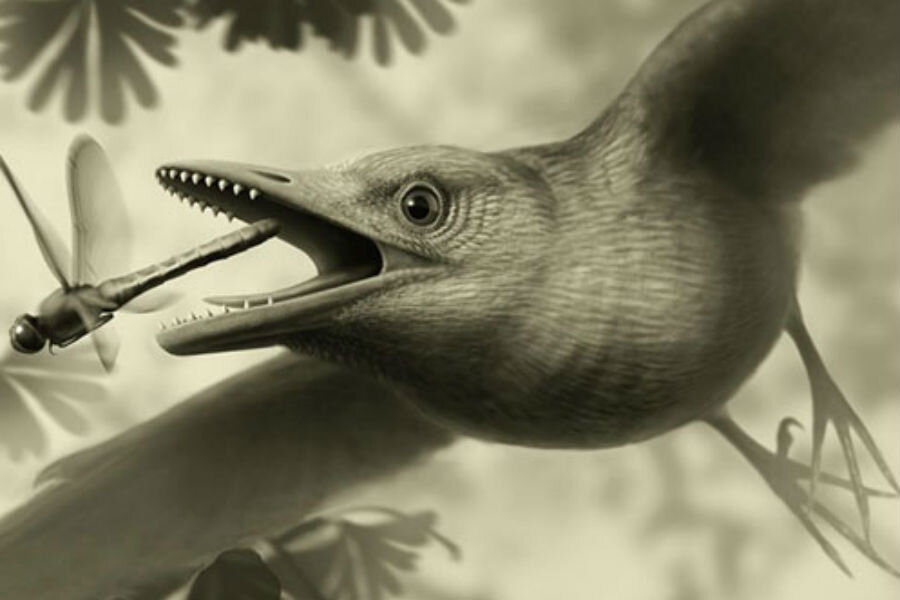Could early birds fly? Fossil may hold answers to ancient mystery.
Loading...
Ancient birds may have soared over the heads of dinosaurs, according to a new study of a fossilized wing found in central Spain.
The research, published Thursday in Scientific Reports, delves into the wing details of a 125-million-year-old bird – unlocking the mystery that for a long time scientists have debated: whether or not ancient birds had the power to fly.
Birds have a long evolutionary history compared to most other species: their earliest ancestors, the Archaeopteryx, lived some 150 million years ago in what is now southern Germany.
Led by University of Bristol PhD student, Guillermo Navalón, together with a team of Spanish paleontologists and Luis M. Chiappe of the Natural History Museum in Los Angeles County, the team studied the uniquely well-preserved right wing of the ancient bird from central Spain, which had not only the joint of the forelimb, but also remains of the plumage and of the soft-tissues of the wing, according to a statement.
From this dug-up evidence, the team was able to document a complex system of fibers which turn out to be an anatomical match to the network of ligaments, muscles, and tendons in modern-day birds. According to the researchers, this finely-tuned network positions the wing’s primary feathers, allowing modern birds to take to the sky.
“It’s very surprising that despite being skeletally quite different from their modern counterparts, these primitive birds show striking similarities in their soft anatomy,” lead author of the study, Mr. Navalón said.
The similarity of the structures in the wing of the primitive bird to the birds we see today supports the idea that at least some of the most ancient birds were capable of performing “aerodynamic feats” similar to those we see today, according to the study.
Co-author of the report, Jesús Marugán Lobón from Universidad Autónoma in Madrid called the fossil find “an open window to deep time,” that gives scientists access to the most minute details of “the early evolution of the flight of birds.”








